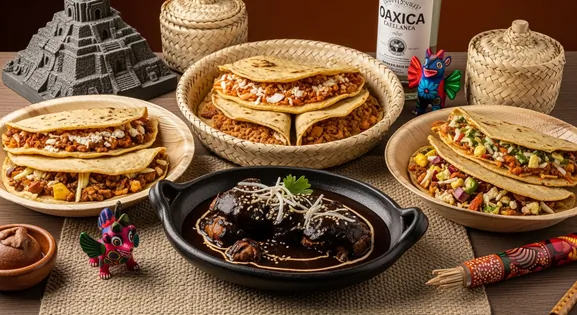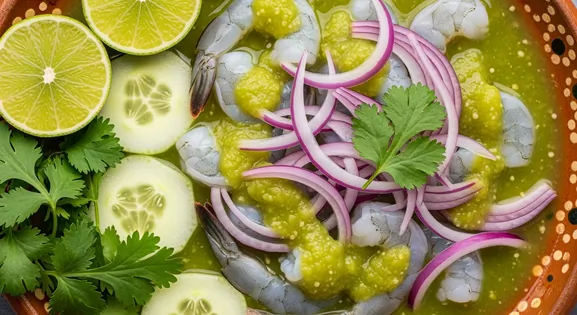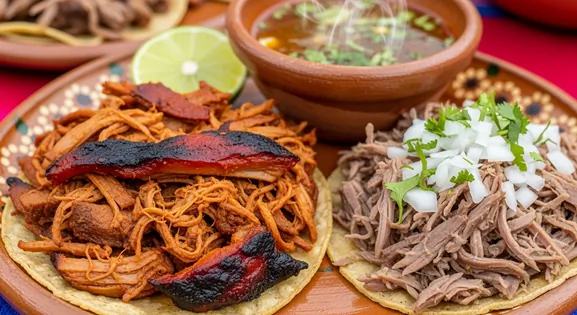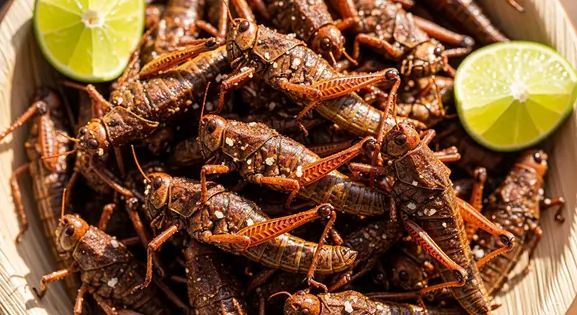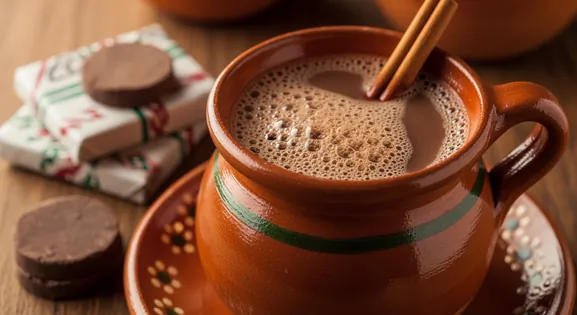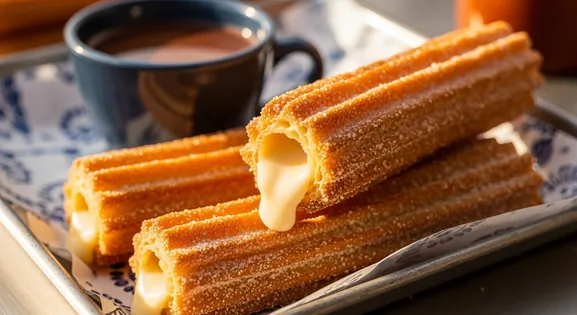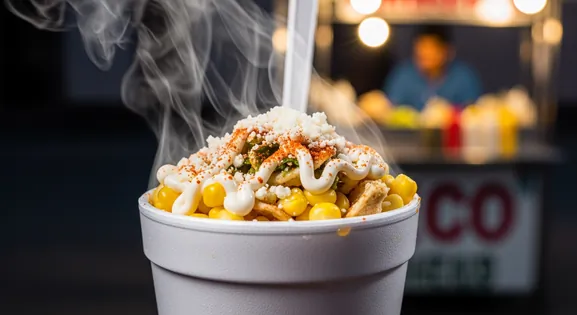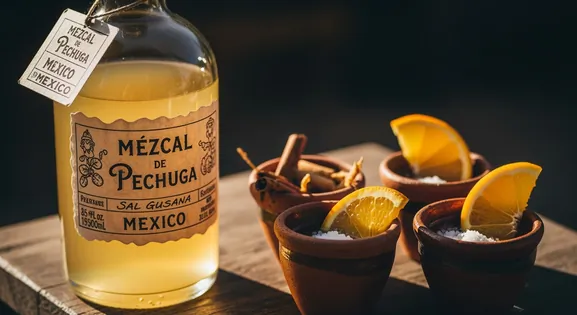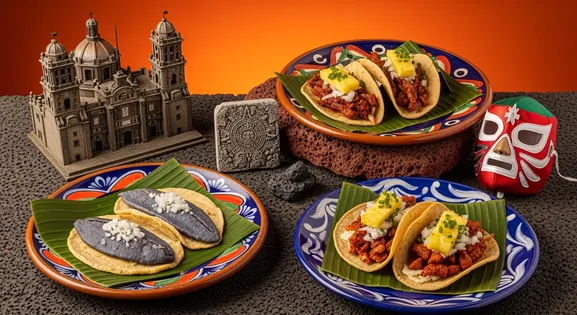
Mexico City
Discover Mexico City's best street food areas including Centro Histórico, Mercado de la Merced & Coyoacán. Expert quality tips, peak hours & must-try tacos al pastor.
Mexico's culinary landscape is a vibrant tapestry woven from ancient traditions, indigenous ingredients, and Spanish influences. From the bustling street corners serving sizzling tacos to the refined flavors of regional moles, food here is a profound expression of culture and community. Every bite tells a story, inviting travelers to explore a world where flavor, history, and daily life are inextricably linked.
Mexican food culture is deeply rooted in its pre-Hispanic past, with corn, beans, and chili peppers forming the ancient trinity of its cuisine. Unlike many Western dining customs, meals in Mexico are often communal, with dishes shared among family and friends, reflecting a strong sense of hospitality. Regional diversity is paramount; the rich, complex moles of Oaxaca contrast sharply with the fresh, seafood-centric dishes of the coasts, or the hearty, meat-based fare of the north. Street food is not merely a convenience but a cornerstone of daily life, offering a democratic and accessible way to experience authentic flavors. The concept of "sazón" – a chef's unique touch and flavor – is highly valued, emphasizing the artistry behind seemingly simple dishes. This deep connection to ingredients, tradition, and community makes Mexican cuisine a profound cultural experience.
June, July, August, September
Heavy rains can affect outdoor food preparation. Look for vendors with good shelter and clean practices to make informed choices.
Indoor establishments offer a more controlled environment during downpours, which can be a good choice for consistent quality.
April, May, June
Extreme heat can accelerate food spoilage. Notice if dairy products and seafood are kept chilled or prepared fresh to order.
High temperatures can quickly affect unrefrigerated foods. Choose options that are freshly prepared and not left exposed to the sun.
In Mexico, the corn tortilla is more than just a side; it's an essential tool. Use it to scoop up fillings, sauces, and beans, or to wrap around ingredients to create your own perfect bite. Fresh, handmade tortillas are a mark of quality.
Mexican food is often served with a variety of salsas, ranging from mild to intensely spicy. Always ask or taste a tiny amount first. Don't be afraid to mix and match to find your preferred flavor and heat balance.
The most authentic and delicious street food often comes from vendors who specialize in just one or two dishes. Their mastery of a single item, whether it's tacos al pastor or tamales, is a strong indicator of quality and tradition.
Expert tips for enjoying Mexico's vibrant mercados and tianguis while making quality-focused food choices
How to order, eat, and pay at authentic Mexican taco stands like a local
Must-try Mexican street foods include tacos al pastor (marinated pork with pineapple), elote (grilled corn with cheese and chili), tlayudas (large tortillas with beans, meat, and cheese), tamales, quesadillas with handmade tortillas, and regional specialties like Oaxacan tlacoyos or Yucatecan cochinita pibil tacos.
When enjoying Mexican street food, experienced travelers suggest observing key quality indicators: choose busy stands with high turnover, notice vendors with clean preparation areas, confirm meats are thoroughly cooked, and be discerning with raw garnishes and salsas. Millions enjoy Mexican street food daily by making informed vendor selections.
Authentic Mexican cuisine varies in spice level depending on the region and dish. You can request "no picante" (not spicy) or "poco picante" (a little spicy). Many vendors serve salsas on the side, allowing you to control spiciness. Northern Mexican food tends to be less spicy than southern dishes.
Beyond popular sodas, try aguas frescas, refreshing fruit-infused waters like horchata (rice milk), jamaica (hibiscus), or tamarindo. Also popular are licuados (fruit smoothies with milk or water) and atole, a warm, masa-based drink often flavored with chocolate or fruit.
Discover Mexico City's best street food areas including Centro Histórico, Mercado de la Merced & Coyoacán. Expert quality tips, peak hours & must-try tacos al pastor.
Discover Oaxaca's renowned food markets including 20 de Noviembre, Benito Juárez & Zócalo Plaza. Expert advice on tlayudas, moles & chapulines from trusted vendors.
Raw shrimp in lime juice with chile-infused liquid.
Slow-cooked marinated goat meat with smoky depth.
Toasted grasshoppers seasoned with lime, salt, chile, garlic.
Stuffed chiles with picadillo, nogada sauce, pomegranate garnish.
Chocolate tablets dissolved in water, frothed with molinillo.
Crispy fried pastries filled with sweet preparations.
Ant larvae with granular texture and nutty flavor.
Boiled corn kernels with lime, chili, mayo, cheese.
Thick corn masa patties with pinched edges and toppings.
Spirit distilled with suspended chicken breast and fruits.
At Tasteplorers, our mission is to provide the most accurate and useful travel information in the world. To achieve this, all content on this site is created through our unique editorial framework. We utilize leading AI research tools, guided by our proprietary prompts, and a multi-stage validation process. This entire system is overseen by our editorial team to ensure everything we publish meets our high standards for accuracy, cultural nuance, and practical value for travelers.
Learn more about our Editorial Process and our Mission.
Discover Europe's diverse culinary landscape, from Mediterranean flavors to hearty Alpine fare. Learn to navigate markets, decode menus, and eat like a local.
Discover the vibrant cuisines of Latin America & the Caribbean. Our expert guide covers everything from Mexican street food to Peruvian ceviche and market tips.
Explore Oceania's diverse food scene. Learn about Polynesian earth ovens, Fijian feasts, and the vibrant café culture of Australia and New Zealand.
Explore Southeast Asia's diverse food cultures from Thailand to Vietnam. Get expert tips on navigating spice levels, choosing quality vendors, and understanding the rich traditions of the region.
